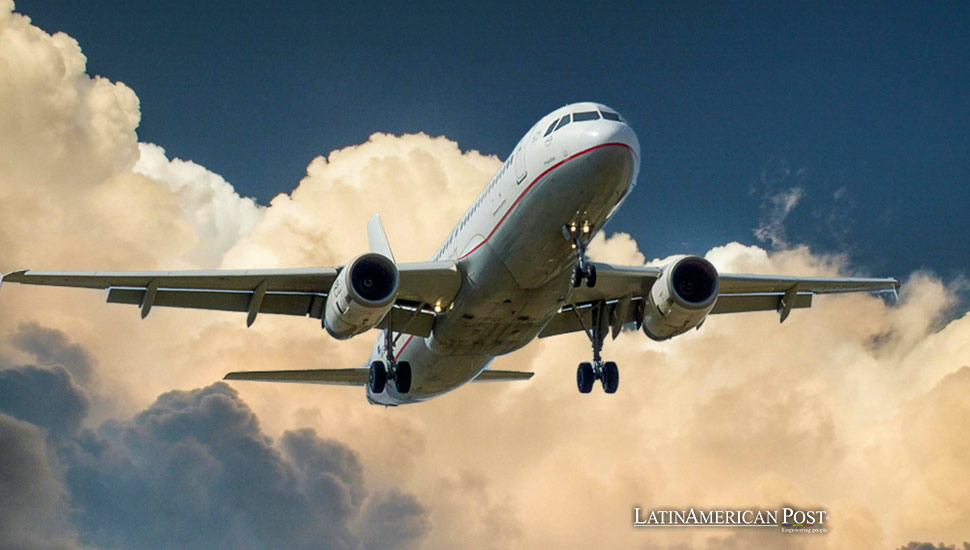Peru Launches Flight Connecting Lima to Huaraz for Archaeological and Mountaineering Tourism

Peru has inaugurated a new flight route linking Lima with Huaraz, a city in the Andean region of Áncash, famous for its archaeological sites and mountaineering opportunities. This new route aims to boost tourism and economic growth in the region.
Peru marked a significant milestone in its efforts to enhance tourism and regional connectivity by launching a new flight route connecting Lima with Huaraz in the Andean department of Áncash. This picturesque destination is renowned for its rich archaeological heritage and stunning natural landscapes, making it a popular spot for history enthusiasts and adventure seekers.
The inauguration ceremony, held at Lima’s airport, was a testament to the significant potential of the new flight route. Several high-ranking government officials, including the Minister of Foreign Trade and Tourism, Elizabeth Galdo, participated in the event. Minister Galdo underscored the potential economic benefits of the new flight route, particularly its role in job creation and regional development. Her optimism was palpable as she stated, “The initiation of commercial operations with high-capacity aircraft will be crucial for the economic development and job creation in Áncash, a region known for its beautiful destinations, snow-capped peaks, lagoons, valleys, and beaches, as well as its rich history and diverse cuisine.”
Latam Airlines Peru operates the new flights to Anta Airport, located just 30 minutes from the center of Huaraz. These flights, which take less than an hour, will be available four times a week on Mondays, Thursdays, Fridays, and Sundays. The route will utilize Airbus A319 aircraft, each with a capacity of 138 passengers, offering a comfortable and convenient travel experience. This new route is set to significantly boost local tourism and economic activities, providing easy access to the rich historical and natural attractions of the Áncash region.
Minister Galdo projected that the new route would transport approximately 3,500 passengers monthly, a significant influx that is expected to stimulate the local economy. She expressed optimism about the potential for increasing the flight frequency shortly, aiming to restore pre-pandemic tourism levels. “We are focused on reaching pre-pandemic figures in the tourism sector,” she added, underlining the substantial economic benefits that the increased tourism will bring to the region.
The ceremony also included other key ministers, such as Leslie Urteaga, Minister of Culture; Raúl Pérez, Minister of Transport and Communications; and Juan Carlos Castro, Minister of Environment. Their attendance underscored the multifaceted importance of the new flight route, which promises to enhance tourism and cultural, environmental, and infrastructural development in Áncash.
Áncash: A Hub of History and Natural Beauty
The region of Áncash is a treasure trove of unique cultural and natural heritage that sets it apart in Peru’s landscape. It is the birthplace of the ancient Chavín culture and home to some of the most beautiful tourist towns recognized by the World Tourism Organization (WTO), such as Chavín de Huántar and Chacas. Chavín de Huántar, an archaeological site over 2,000 years old, offers a fascinating glimpse into the region’s rich historical past.
For nature lovers, Áncash is a treasure trove of attractions. The Huascarán National Park, one of Peru’s most biologically and culturally diverse protected areas, boasts some of the highest peaks in the Andes. This park is a haven for biodiversity and offers breathtaking vistas, making it a prime destination for hiking and mountaineering.
Other notable attractions in Áncash include the mythical Callejón de Huaylas, with its stunning natural sites such as the Llanganuco Lagoon, Parón Lagoon, and Laguna 69. These scenic spots are complemented by the glacier Pastoruri, the Áncash Archaeological Museum, the Sanctuary of the Lord of Solitude, the Monterrey hot springs, and the Willkawaín Archaeological Monument, among others. These diverse attractions underscore Áncash’s status as a must-visit region for those seeking to explore Peru’s natural beauty and historical depth.
Regional Impact and Broader Implications
Launching the Lima-Huaraz flight route is a significant development with implications extending beyond regional boundaries. For Latin America, enhancing connectivity between major cities and less accessible regions is crucial for promoting tourism, economic growth, and cultural exchange. Peru’s initiative to improve access to Huaraz can serve as a model for other Latin American countries looking to boost their tourism sectors.
Improving infrastructure and connectivity is vital for tapping into the economic potential of tourism. It allows for more efficient travel, encourages investment, and provides local communities with opportunities for growth and development. By facilitating more accessible access to regions like Áncash, governments can help diversify their economies and create sustainable sources of income for local populations.
Latin American countries with rich cultural and natural heritage benefit significantly from enhanced connectivity. Peru’s example demonstrates how strategic investments in transportation infrastructure can lead to increased tourism and economic benefits. Other countries in the region can look to this model as they develop their tourism strategies and seek to attract international visitors.
Looking Ahead: Sustainability and Growth
While the new flight route promises significant benefits, it also comes with challenges that need to be addressed to ensure sustainable growth. The influx of tourists must be managed carefully to preserve the natural and cultural assets of Áncash. This calls for a collective commitment to responsible tourism practices that will be essential to maintain the region’s appeal and protect its environment.
The Peruvian government will need to implement measures in collaboration with local authorities and private sector stakeholders to ensure that tourism development aligns with environmental conservation and cultural preservation goals. This includes promoting responsible tourism, supporting local businesses, and investing in infrastructure that minimizes the ecological footprint.
The success of the Lima-Huaraz route could pave the way for similar initiatives across Peru and Latin America. Countries can enhance their tourism offerings by improving access to diverse regions and creating a more inclusive and sustainable tourism industry. The key will be balancing economic growth with preserving cultural and natural heritage.
A New Era for Tourism in Peru
The inauguration of the flight route connecting Lima to Huaraz marks a new era for tourism in Peru. This development is about enhancing connectivity and unlocking the economic potential of the Áncash region. By making this beautiful and historically rich region more accessible, Peru is opening up new tourism and economic development opportunities.
The collaboration between various government ministries and private sector partners highlights the integrated approach needed to achieve sustainable growth. As Peru continues to invest in its tourism infrastructure, the benefits will extend beyond regional boundaries, contributing to the nation’s overall growth and prosperity.
Also read: Technology Unveils Secrets of Ancient Peruvian Adobe City
The lessons learned from this initiative can serve as a blueprint for other Latin American countries seeking to enhance their tourism sectors. Countries can attract more visitors by improving connectivity, promoting sustainable practices, investing in infrastructure, and creating lasting economic benefits. The new flight route to Huaraz is a testament to what can be achieved with vision, collaboration, and commitment to sustainable development.





